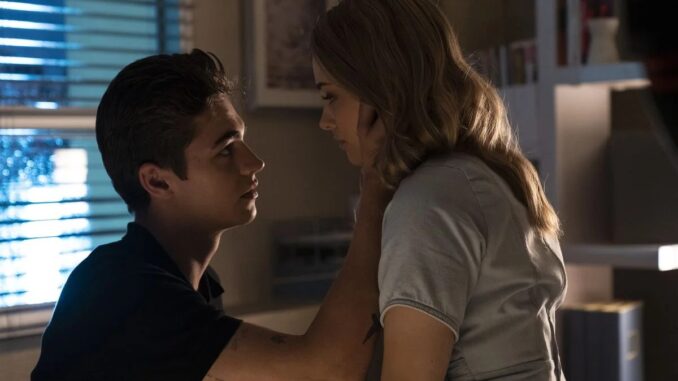
From Brooding Bad Boy to Emotional Growth: Hero Fiennes Tiffin Reflects on His "After" Journey
Hero Fiennes Tiffin’s portrayal of Hardin Scott in the “After” film series etched itself into the consciousness of a generation. More than just a cinematic adaptation of Anna Todd’s popular novels, the films became a cultural phenomenon, catapulting Tiffin to international fame. While the spotlight may have been intense, the actor's journey with the franchise reveals a deeper narrative, one of personal and professional growth, navigating the complexities of a demanding role, and ultimately, embracing the evolving definition of masculinity.
Initially, Tiffin was drawn to Hardin's raw, untamed energy. The character was a whirlwind of contradictions – a brooding rebel with a painful past, capable of both profound tenderness and devastating cruelty. He admits to being intrigued by the challenge of portraying this complexity, of unpacking the layers of trauma that fueled Hardin's volatile behavior. "At first, it was all about understanding his anger," Tiffin has mentioned in interviews. "Why was he so guarded? What was he trying to protect?" He immersed himself in the character's backstory, meticulously crafting the physical posture, the simmering intensity in his gaze, and the carefully chosen words that built Hardin's impenetrable facade.
However, the journey wasn't without its challenges. The relentless scrutiny that accompanied the franchise, the fervent expectations of fans, and the constant demands of filming under pressure took their toll. Tiffin acknowledged the pressure to embody the idealized version of Hardin presented in the books, a pressure that could be both exhilarating and overwhelming. He learned to balance the demands of the character with the need to maintain his own personal identity, a tightrope walk many young actors face when dealing with a defining role.
As the "After" series progressed, so too did Hardin's arc, mirroring Tiffin’s own growth as an actor. The focus shifted from Hardin’s initial rebellion and destructive tendencies to his attempts at self-improvement and vulnerability. This evolution presented a new set of challenges for Tiffin. He had to dig deeper, exploring the nuances of regret, forgiveness, and the arduous process of breaking unhealthy patterns. The actor embraced this opportunity, allowing himself to become more emotionally vulnerable on screen. This wasn't just about performing sadness or anger; it was about conveying the raw, uncomfortable truth of a man struggling to overcome his inner demons.
Tiffin has spoken openly about the importance of portraying Hardin's journey towards a healthier expression of masculinity. In a world often saturated with toxic portrayals of male strength, the "After" films, despite their flaws, attempted to explore the importance of emotional intelligence, communication, and the acceptance of vulnerability. Tiffin saw the role as an opportunity to contribute to this narrative, to show that true strength lies not in suppressing emotions, but in confronting them and learning to navigate them constructively. He strived to humanize Hardin, to make his flaws relatable, and to ultimately, inspire viewers to believe in the possibility of personal transformation.
The "After" journey has undoubtedly been a defining chapter in Hero Fiennes Tiffin's life. It provided him with a platform, honed his craft, and forced him to confront both the challenges and rewards of fame. More than just playing a character, Tiffin has lived alongside Hardin, witnessing his evolution and learning valuable lessons about vulnerability, growth, and the ongoing process of self-discovery. As he moves forward, armed with the experience and insights gained from this significant role, one can anticipate witnessing a continued evolution of his artistry, one that promises to be as compelling and nuanced as the character that first captured the world's attention. The story of Hero Fiennes Tiffin and his "After" journey is a testament to the power of art to shape not only the audience's perception but also the artist's own understanding of themselves and the world around them.
